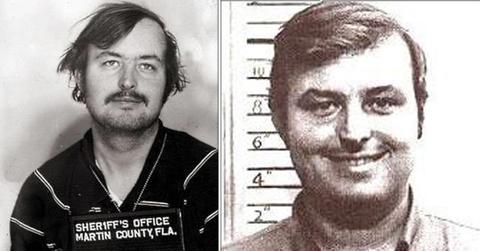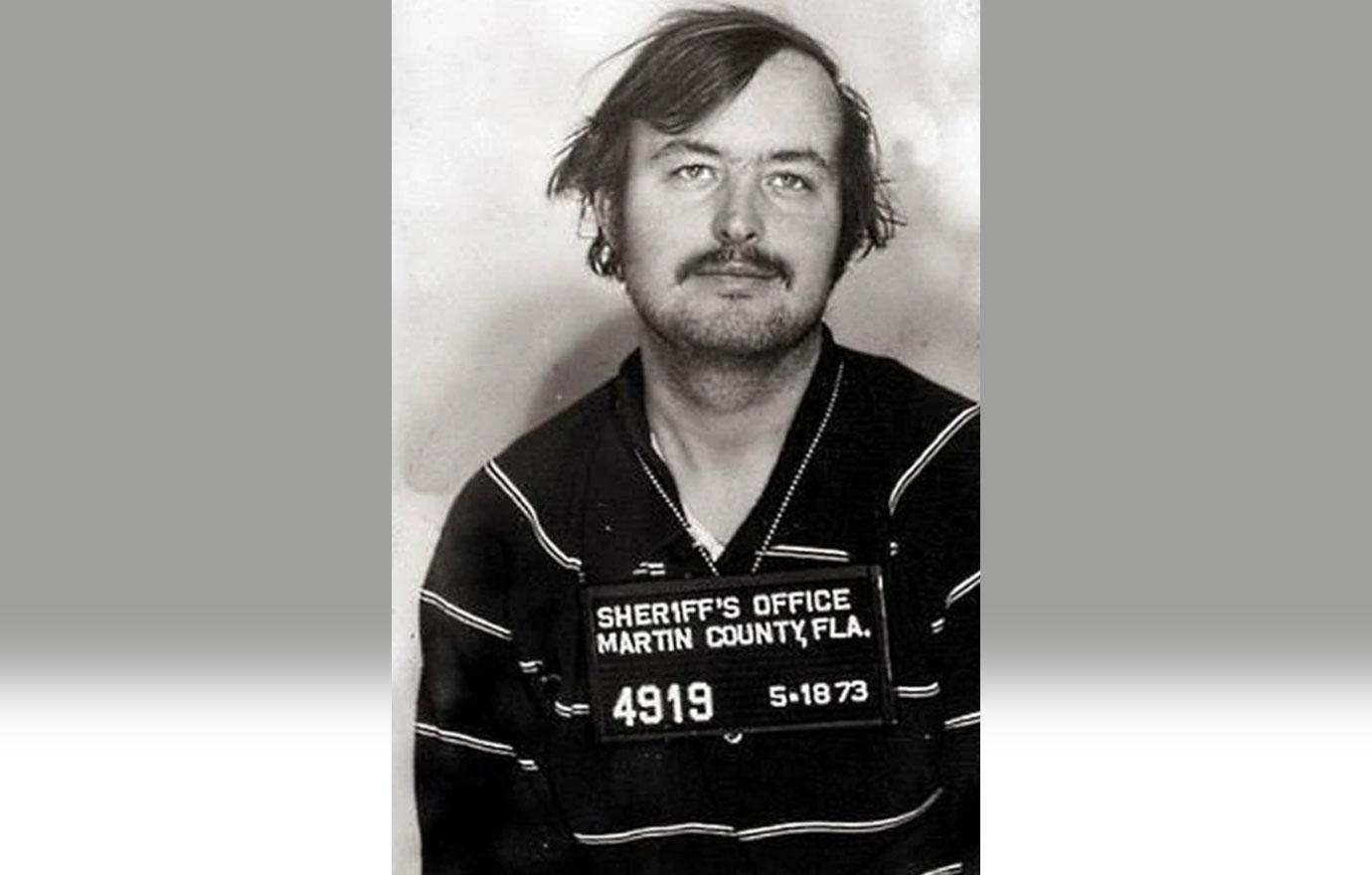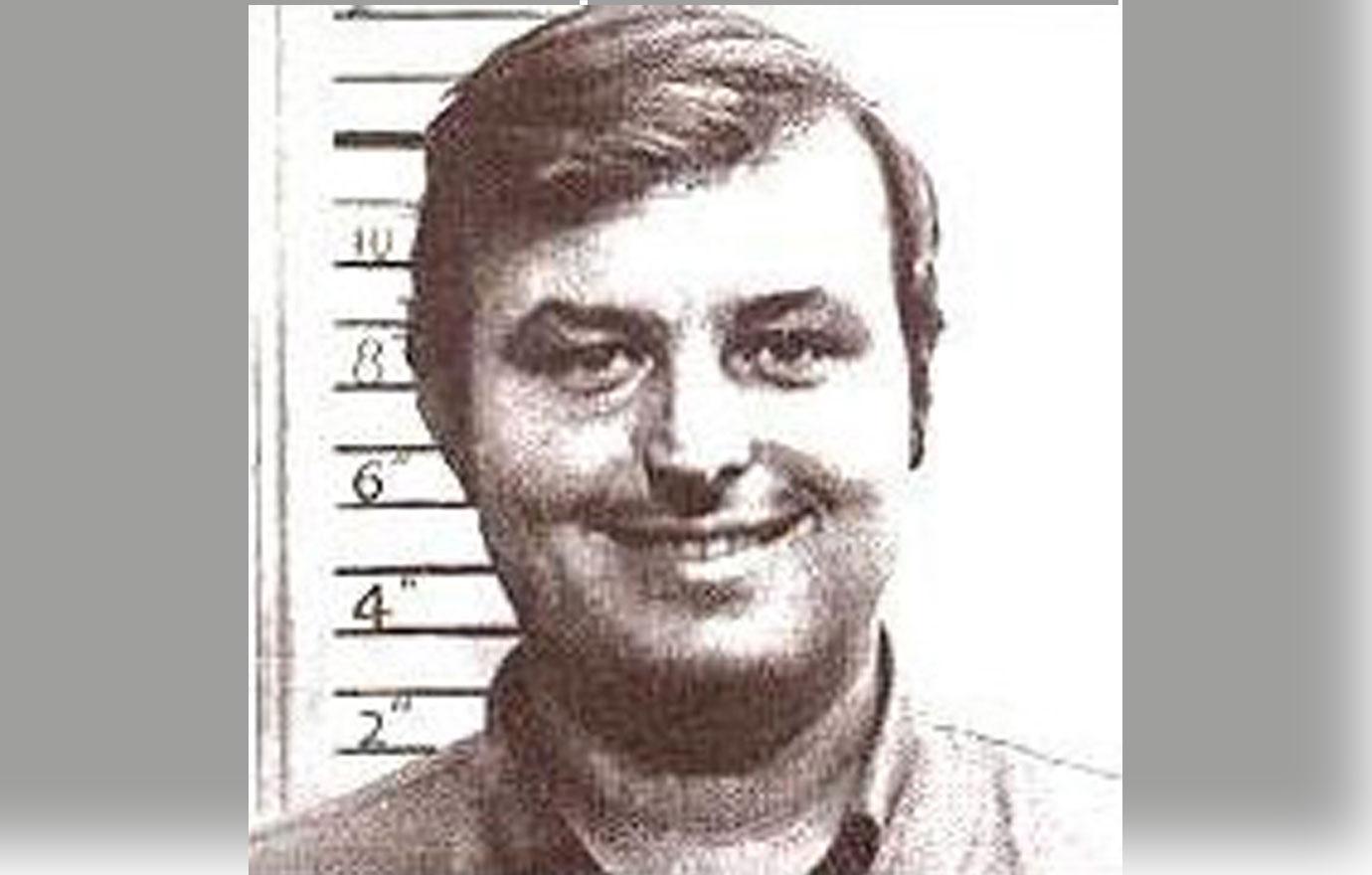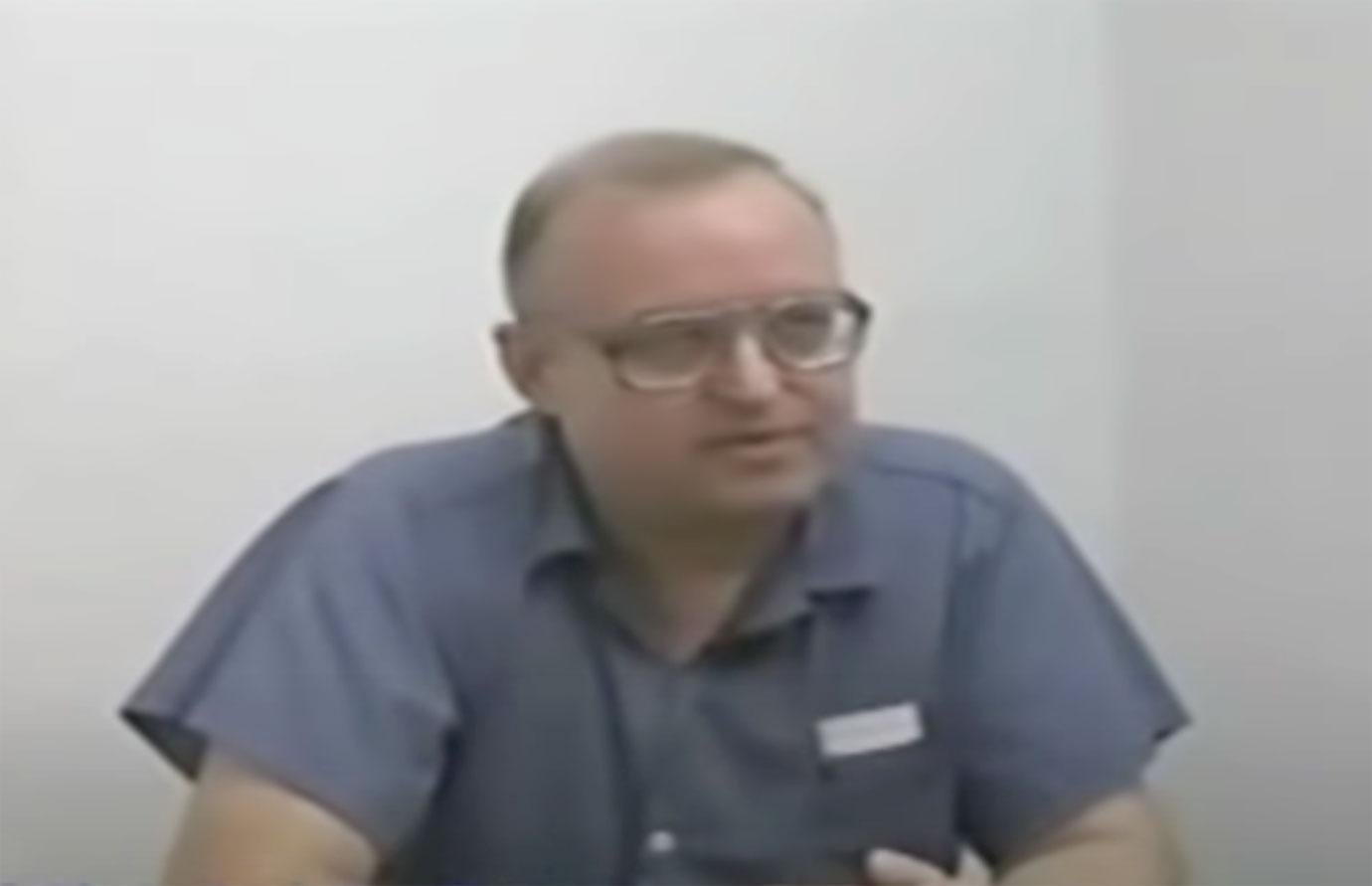A Florida Man Failed as a Priest and Wore the Uniform of a Cop. But, His True Passion Was Serial Killing.

One of the worst serial killers in the United States was never convicted for the likely dozens of homicides he committed in the 1960s and early 1970s.
He wrote volumes about what he did, claimed it was fiction, yet never reached the notoriety, or garnered the national media attention of Ted Bundy, another serial killer from Florida in the 1970s.
His name was Gerard John Schaefer.
Schaefer managed to keep anyone who accused him of being a serial killer on the defensive through a flurry of lawsuits from his prison cell. He simultaneously bragged about his body count and denied any of it was true.
Schaefer set his sights on police work, and at 25 years old became a beat cop.
The year was 1971, but authorities later concluded he’d been murdering women for several years before he ever got the keys to his first patrol car and steered it out of a Florida police station parking lot.
He’d already tried teaching, where he was fired for highly inappropriate behavior. The priesthood didn’t suit him, either. He was rejected as an unlikely prospect for lacking faith. In disgust, Schaefer quit Catholicism for good. Seeking inspiration, he joined the family-friendly, wholesome troupe “Up With People.”
But his efforts were in vain. Whatever goodness lived inside Schaefer didn’t have a prayer against his demonic side, or what he called “the sex beast.”
THE BOY NEXT DOOR
Schaefer was the quintessential midwestern Catholic schoolboy who grew up chubby and apple-cheeked. His family relocated from Wisconsin, where he was born in 1946, to Atlanta when he was a child, and later moved to Ft. Lauderdale, in southeastern Florida, where he began high school.
He was outwardly adjusted but spent his private time immersed in sexual perversions that no one, not even family members, knew about.

At 12 years old, Schaefer began an obsession with women’s underwear and his fantasies tended toward voyeurism and violence. He became sexually excited by pain and bondage, including his own, and started to act out his fantasies about hurting women. Like many rapists before him, he turned into the neighborhood Peeping Tom in his teen years.
Schaefer’s childhood neighbor, Leigh Bonadies, went missing in 1968. Her skeletal remains were not discovered for a decade. He was suspected of her murder, as he had maintained a relationship with her-— they played tennis together — and later admitted to watching her through open curtains. Police officers would find a piece of her jewelry among his possessions.
In 1966, Schaefer toured the U.S. with the then-popular inspirational group “Up With People.”
When he returned to the Ft. Lauderdale area, he moved into his mom’s house to settle into his 20s, looking for a career. He’d decided to become a high school teacher because he wanted to instruct teenagers about good moral values.
He was asked to leave the student teaching program twice and after being hired at Plantation High School. His supervisor Richard Goodhart later reported, according to An Encyclopedia of Modern Serial Killers, he told Schaefer, “…he'd better never let me hear of his trying to get a job with any authority over other people, or I'd do anything I could to prevent it."
Despite considerable personality issues and not having “an ounce of common sense,” according to one former boss, Schaefer cleared the hurdles necessary to become a cop, even after he failed one psychological test. He now had more authority over others than in nearly any profession — and he used every bit of it to his advantage.
Over the next two years, Officer Schaefer would pick up many citizens in his patrol car. Some were never seen again.
THE SHORT CAREER OF A KILLER COP
Broward County is the main police jurisdiction for Ft. Lauderdale, but Schaefer had been unable to get a job as a police officer there. He broadened his net, finding a much smaller town called Wilton Manners to hire him.
Their new cop was 25 years old, fresh out of the academy, and ready to fight crime. Within a few months, he began calling women up for dates after he’d found their personal information in the department computer.
He was hired in March 1972 and fired in April. But, despite having been rejected from Broward County and let go in Wilton Manners, he was able to procure another job by June, this time in the town of Stuart, Florida, for the Martin County Sheriff’s Office, by forging a recommendation letter from his former boss.
Schaefer was cruising the highway near the beach when he picked up two hitchhikers, Pamela Wells and Nancy Trotter, both 17 years old, and informed them it was illegal to hitchhike. They believed the lie, but he kindly drove them back to where they were staying, offering to pick them up the next day and give them a ride to the beach — for their own safety.
He did just that but drove them instead to a secluded area of Hutchinson Island.

Schaefer tied both girls up, placing nooses around their necks and making sure the bindings were secure and both girls were up off the ground on tree roots, according to the New York Daily News. Then his police radio called him away.
“I’ll be back in a little while,” he said, before hopping in his unmarked car to return to the Sheriff’s office.
They escaped, flagged down a car on the highway, and reported Schaefer, including a thorough description of their harrowing experience and his full name.
Schaefer tried to backpedal with his boss, spinning a tale about he was trying to scare the girls to teach them a lesson about the dangers of hitchhiking. Sheriff Richard Crowder didn’t buy the story and fired him, filing charges against the former deputy for one count of false imprisonment and two counts of aggravated assault.
A PLATE, BUT NO ARREST
Schaefer was convicted and sentenced to one year behind bars with three years’ probation. He would go to jail in January 1973 but what authorities didn’t know at the time is that it was too late for most of his victims.
Out on bond from August 1972, until he began serving his sentence, he had plenty of time to continue acting out his perverted fantasies. Evidence would later surface that he’d probably been killing since his “Up With People” days. He had a preference for teen girls and hitchhikers.
The friendly officer had a lot of victims to choose from because the days of hitchhiking were in full swing everywhere, but it was especially common in beach communities.
Susan Place and Georgia Jessup were best friends and high school juniors who loved the beach. Place’s parents saw her leave the house, and her mother, Lucille, wrote down the license plate to the car they got into. She knew Susan went with a man but didn’t know his name.
The girls only told her they were going with him to the beach. Lucille Place remembered the car, an aquamarine Datsun, that pulled up to the house on the night she last saw her daughter.
- AS BODIES PILED UP ON LONG ISLAND BEACHES, POLICE BELIEVED IT WAS A SERIAL KILLER'S WORK. A LOOK AT THE GILGO BEACH MURDERS.
- Faces of Evil: Here are the 10 American serial killers who killed the most people in the 20th, 21st centuries
- Walking Among Us: Three Recent Serial Killer Cases Where The Murderer Hasn't Been Caught
Despite having a name, license plate tag and description of the vehicle, the police did not connect Schaefer to Place and Jessup’s disappearance until March 1973. And that was only after Lucille found a letter in her daughter’s bedroom, located Schaefer’s house and led the cops to him.
Schaefer denied knowing the girls, but in April their decomposed bodies were found on Hutchinson Island. Evidence indicated they been tied to a tree, the style consistent with the reports by Trotter and Wells. The cops immediately recognized the handiwork and the location.
Both teenagers were hacked to death and raped, their bodies mutilated and buried in a single shallow grave. Place was shot through the jaw.
After Lucille Place led the authorities to her daughter’s killer, the police searched Schaefer’s home where he lived with his mother and found a pile of incriminating personal items. The search uncovered a stash of jewelry and personal belongings that were eventually tied to 38 missing or murdered teenagers. Included in the find were human teeth and a murder journal Schaefer kept detailing his crimes.
Most importantly for Lucille Place, they found jewelry and other items that connected Schaefer to her daughter. Along with the letter she’d found in Susan’s bedroom and a purse belonging to Jessup recovered from Schaefer’s then-wife Teresa, authorities had enough evidence to go to trial.
None of the other murders would ever be officially solved, but families became aware, one by one as local authorities linked missing persons and skeletal remains to personal belongings, that a jailed serial killer was most likely responsible for the disappearance or murder of their daughters and sisters.
Authorities were happy with the conviction for the murders of Place and Jessup, convinced Schaefer would never see the light of day with two concurrent life sentences.
Then his former high school girlfriend, a true-crime writer, entered the picture.
'THE BEAST COMES OUT'
In the 1970s, little was known about serial killers. Ann Rule wrote the bestselling “The Stranger Beside Me” in 1980, describing her friendship with a man she was shocked to discover had murdered as many as 30 women.
Bundy hadn’t yet emerged as the first celebrity serial killer when Schaefer was convicted, and the media and public didn’t understand such men existed.
But one lesser-known true crime writer named Sondra London also knew a killer, her former high school boyfriend, who now sat in a Florida jail cell. She got in touch with an old friend, writing to Schaefer.
Over the next few years, the convict lived out his fantasies in the tortures and murders by providing London with detailed descriptions.
A 1972 video interview, co-produced by London, shows Schaefer in prison, a pudgy and unhandsome everyman insisting he’s a romantic at heart.
When he self-published his musings and memories in a book called “Killer Fiction,” Schaefer claimed it was fantasy and art. London later wrote she believed the prose was true and that her former lover was a serial killer. Schaefer sued her.
He sued nearly every true-crime writer he could find, targeting high-profile individuals such as Colin Wilson. Anyone who dared to name him as a serial killer in print found themselves on the other end of a lawsuit. Then he threatened to kill them.
His litigious nature made it difficult for law enforcement, and they shied away from pursuing additional convictions partly for this reason. Since Schaefer had two life sentences, he would never see the light of day anyway.
But circumstances were about to change for the failed priest, ex-student teacher and Catholic schoolboy who went horribly wrong. His life in prison as a former cop made him a target.
A HIGH BODY COUNT
Schaefer careened between categorical denial of any guilt and bragging he was “at one time the world’s #1 serial killer,” according to a June 1995 decision by the 7th Circuit, US Court of Appeals. While all the lawsuits he brought were dismissed, personal links to so many missing and murdered women supported what he wrote about himself.
Schaefer may be responsible for the rape, torture, and murder of up to 80 women. He described himself as killing for eight years, and at least three murder victims tied to him were not from the Ft. Lauderdale area.

The consensus by law enforcement, based on known murders and evidence that linked Schaefer, is that he murdered nine women between August 1969 and October 1972.
In 1989, Schaefer published “Killer Fiction,” but it didn’t find an audience, despite London’s help. She had cut off any relationship beyond business in 1965 when he first told her about his sick fantasies.
Former FBI agent Bill Hagerty described Gerard Schaefer, a necrophiliac and cannibal, as one of the sickest individuals he’d ever encountered in the book “Encyclopedia of Modern Serial Killers.” He said in all his years of hunting serial killers, and talking with them, he would put Schaefer in the top five.
PRISON JUSTICE
The names of all of Schaefer’s victims will never be known. Most authorities, including Robert Ressler of the FBI, believe the body count is beyond 30.
Schaefer raped, tortured and murdered between 80 and 110 girls and women but had forgotten the details, claiming he’d killed women on three continents. He’d spent time in Europe and Africa after his failed stint as a teacher.
On Dec. 3, 1995, an inmate at Florida State Prison entered Schaefer’s cell and attacked him with a knife. He slit his throat, then stabbed Schaefer 40 times, focusing on his eyes.
Murder charges were brought against a lifer, Vincent Rivera, but Schaefer had made plenty of enemies while incarcerated. He’d been attacked by having feces launched at him on more than one occasion, and his cell had been set on fire twice.
In prison, Schaefer was known for acting as a jailhouse lawyer, then using confidential information from his “clients” against them. He was killed at 49 years old, not soon enough for the families who knew he’d taken more than jewelry and teeth.
Schaefer went to his grave having revealed lurid details about dozens of rapes and murders but never providing enough specifics for families to get the justice and closure to help them heal.
Become a Front Page Detective
Sign up to receive breaking
Front Page Detectives
news and exclusive investigations.
